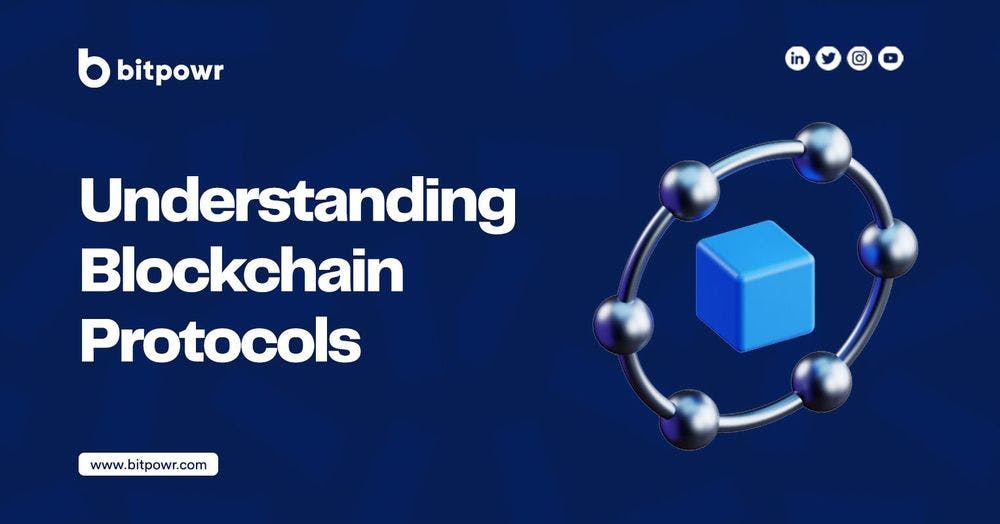At the core of the blockchain lies a set of rules that govern how transactions are executed and recorded on the network. These rules are known as blockchain protocols. In this article, we will explore what blockchain protocols are, how they work, and their significance in the blockchain ecosystem.
What is a Protocol?
In the world of technology, a protocol is a set of rules that enable electronic devices to communicate and exchange data with each other. It forms the basis of software that powers a network, enabling it to function effectively. Protocols are not specific to blockchain technology; they exist in various forms and are used in different applications.
For example, the HTTP and HTTPS protocols are used to facilitate website communication on the Internet. Similarly, TCP/IP and DNS are other protocols that underpin Internet applications. Protocols play a crucial role in ensuring the smooth functioning of Internet applications.
What is a Blockchain Protocol?
A blockchain protocol is a set of rules that govern how transactions are executed and recorded on a blockchain network. These protocols ensure that the network is secure, transparent, and tamper-proof. Cryptocurrencies such as Bitcoin and Ethereum rely on blockchain protocols to maintain the integrity of their transactions.
The Bitcoin protocol, for instance, specifies the rules that govern the Bitcoin network. It utilizes a peer-to-peer network that enables individuals to conduct financial transactions without the involvement of a trusted third party. Transactions are verified by network nodes through cryptography and recorded in a public distributed ledger, i.e., blockchain.
Similarly, the Ethereum protocol is based on smart contracts that automate transactions when certain parameters are met. Smart contracts enable participants to transact among themselves without the need for a trusted central authority.
How do Blockchain Protocols Work?
Blockchain protocols work by enabling the creation of a distributed ledger that records all transactions made on the network. Each block on the blockchain contains a cryptographic hash of the previous block, creating an unbreakable chain of data. Once a transaction is recorded on the blockchain, it cannot be altered, ensuring that the integrity of the network is maintained.
Blockchain protocols utilize cryptography to secure transactions and ensure that only authorized parties can access the network. The protocols ensure that all transactions are validated by network nodes, and only those that meet the specified criteria are added to the blockchain. The protocols also specify the rewards given to miners who validate transactions on the network.
What are the Importance and Benefits of Blockchain Protocols?
Blockchain protocols play a crucial role in the blockchain ecosystem by ensuring that the network is secure, transparent, and tamper-proof. They enable transactions to be conducted without the need for a trusted central authority, ensuring that the network is decentralized. Blockchain protocols also ensure that transactions are validated in a transparent and efficient manner, eliminating the potential for fraud and corruption.
The benefits of blockchain protocols include increased security, transparency, and efficiency. They enable faster transaction processing times, lower transaction fees, and enable the creation of new blockchain-powered applications.
Various Types of Protocols.
- Proof of Work (PoW) Protocol: This is the most common type of blockchain protocol. It involves miners competing to solve a complex mathematical problem, with the winner getting to add a new block to the blockchain and receiving a reward. Bitcoin is an example of a blockchain that uses the PoW protocol.
- Proof of Stake (PoS) Protocol: Unlike PoW, the PoS protocol does not require miners to solve complex mathematical problems. Instead, the protocol assigns the right to add a new block to the blockchain based on the amount of cryptocurrency a miner holds. The more cryptocurrency a miner holds, the more likely they are to be selected to add a new block to the blockchain. Ethereum is an example of a blockchain that uses the PoS protocol.
- Delegated Proof of Stake (DPoS) Protocol: This protocol is similar to PoS, but instead of assigning the right to add a new block based on the amount of cryptocurrency a miner holds, it assigns the right based on the number of votes the miner receives from other network participants. The more votes a miner has, the more likely they are to be selected to add a new block to the blockchain. EOS is an example of a blockchain that uses the DPoS protocol.
- Byzantine Fault Tolerance (BFT) Protocol: This protocol is designed to allow blockchains to continue to function even in the presence of malicious nodes or nodes that are not functioning properly. BFT protocols work by ensuring that all nodes in the network agree on the order of transactions and blocks added to the blockchain. Hyperledger Fabric is an example of a blockchain that uses the BFT protocol.
- Directed Acyclic Graph (DAG) Protocol: This protocol is designed to enable high transaction throughput and scalability. Instead of using blocks, DAG-based blockchains use a graph structure to store and confirm transactions. Transactions are confirmed by other transactions in the graph, allowing for high transaction throughput. IOTA is an example of a blockchain that uses the DAG protocol.
- Hybrid Protocol: Some blockchains use a hybrid protocol, which combines features of multiple protocols. For example, the Ripple blockchain uses a hybrid protocol that combines elements of PoW and BFT protocols.
Several other protocols have emerged, with some running on the Ethereum blockchain. These new protocols have paved the way for the development of blockchain-powered financial services. At Bitpowr, we’ve created a modular and unified ecosystem of several blockchain protocols that businesses can instantly integrate with to launch and run their blockchain-enabled financial services. Come talk to us.




